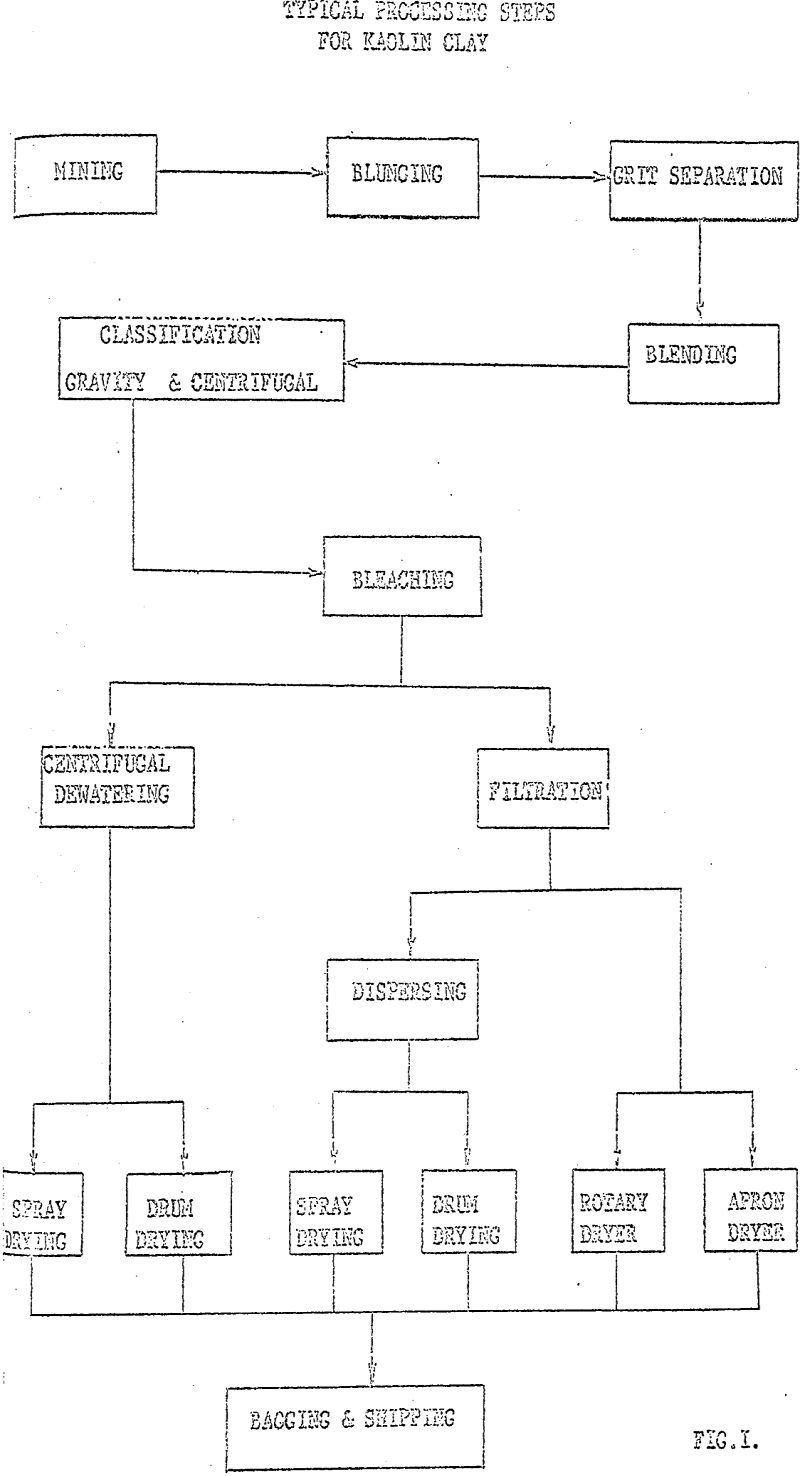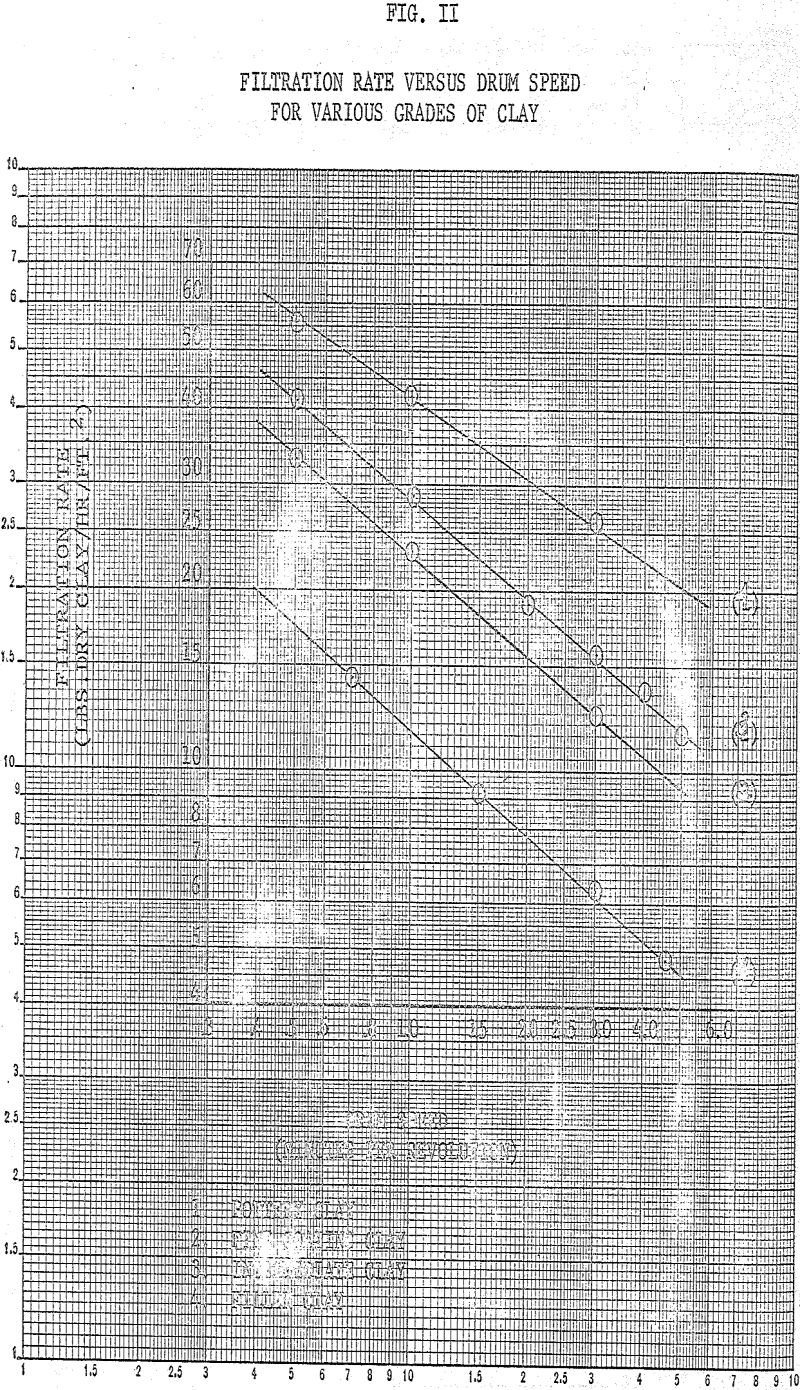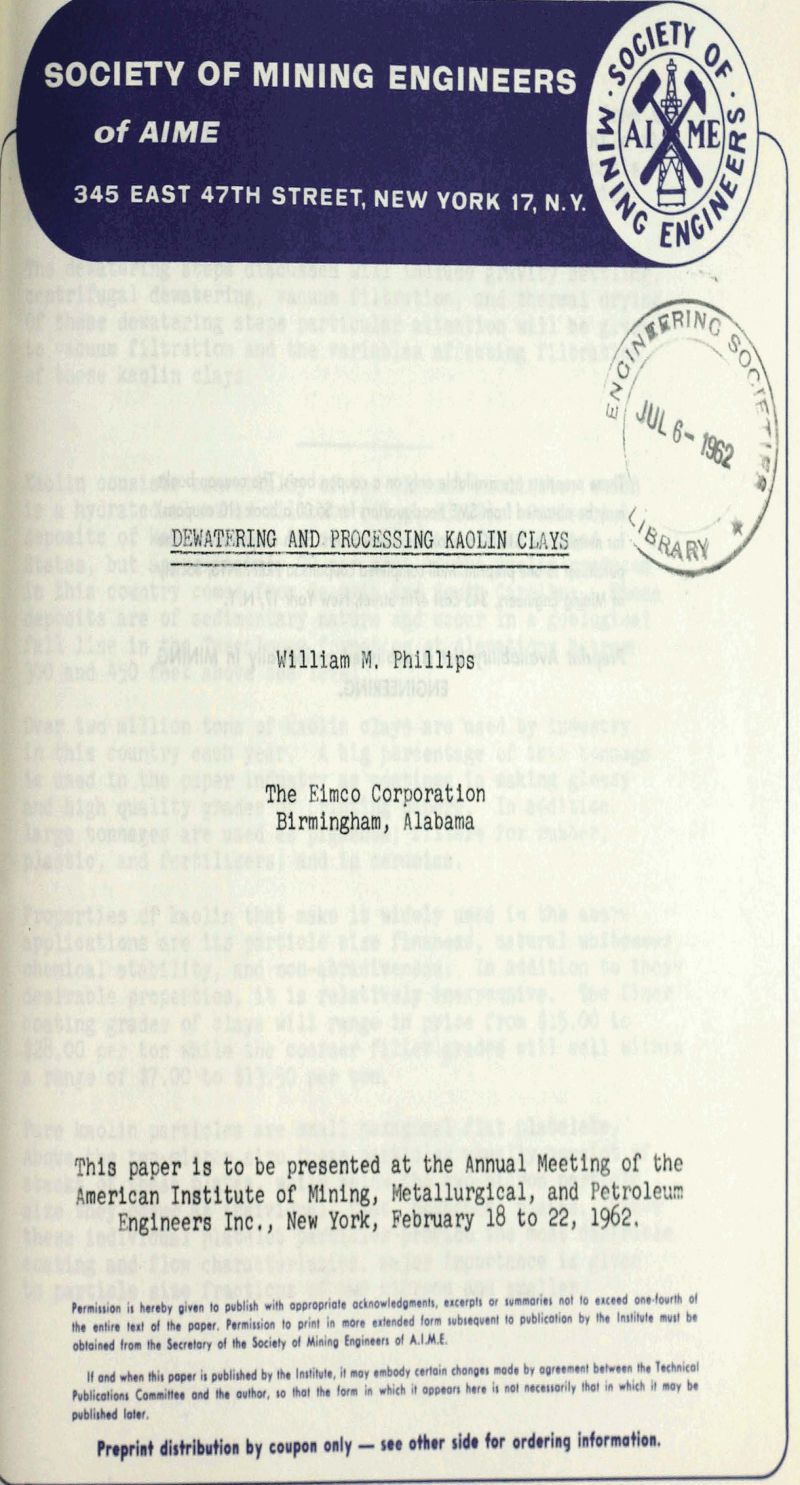The dewatering steps discussed will include gravity settling, centrifugal dewatering, vacuum filtration, and thermal drying. Of these dewatering steps particular attention will be given to vacuum filtration and the variables affecting filtration of these kaolin clays.
Kaolin consists essentially of the mineral kaolinite, which is a hydrated aluminum silicate (Al2O3·2SiO2). Commercial deposits of kaolin occur in several areas of the United States, but approximately 90 per cent of the kaolin produced in this country comes from Georgia and South Carolina. These deposits are of sedimentary nature and occur in a geological fall line in the Tuscaloosa formation at elevations between 300 and 450 feet above sea level.
Mining
All of the kaolin mining is open pit. The ratio of over-burden to clay will average 3:1, but this ratio can, of course, be much higher depending upon the grade of the clay and the size of the deposit. Most of the commercially mineable deposits occur from 20 to 120 feet below the ground surface.
Both draglines and pans are used in removing the overburden and mining the clay deposit itself. After mining, the most common method of transporting the clay to the processing plant is by blunging or repulping with water to a solids concentration of 35 per cent by weight and then pumping the slurry to the plant. Since these deposits vary in size and grade, the processing plants are sometimes located several miles from the mines.
Since there are differences in viscosity and particle size distribution among kaolin deposits, or even within a given deposit, core analyses are performed to identify and catalog each deposit. From this information constant quality control can be maintained over the final product by blending several of the cataloged grades in specific proportions. A supply of each grade can be kept in readiness for blending in agitated slurry tanks or thickeners.
Thickening
The bleached flocculated kaolin slurry is now ready for further dewatering by filtration, assuming that the percent solids in the slurry is sufficiently high to make filtration economical. The per cent solids of the clay slurry at this point depends upon what fraction or cut was made during the classification step and on the concentration of the slurry before classification.
Vacuum filtration of kaolin clays utilizes two types of cake discharge that deserve further comment. These ares (1) roll-discharge drum, and (2) string-discharge drum. The roll-discharge drum filter is the most common unit used for this filtration because of its greater capacity. This is the result of the faster drum speeds possible with this discharge principle plus a more complete cake discharge. With the string-discharge filter the drum must be operated at a sufficiently slow speed to allow a cake formation of adequate thickness to completely blanket the strings otherwise, they will tend to pull through the cake at the discharge point, leaving the clay on the drum. Kaolin clay cakes are too thin and tacky to allow the use of the more common and conventional scraper-discharge vacuum filters.
A fairly standard size for a roll-discharge drum filter is an 11’6″ dia. by 24′ long drum having 865 square feet of filter area. The roll discharge is a 14″ dia, pipe roll driven by an extention of the filter worm shaft drive through a gear reducer. ‘This roll is mounted at the discharge point of the filter parallel to the drum face and approximately one inch away from it. About one inch of clay is carried on the roll at all times and it is the adhersion of this layer to the clay on the drum surface that effects the complete cake discharge accomplished with this method. A doctor blade continuously removes the excess clay that is picked up on the roll from the drum.



